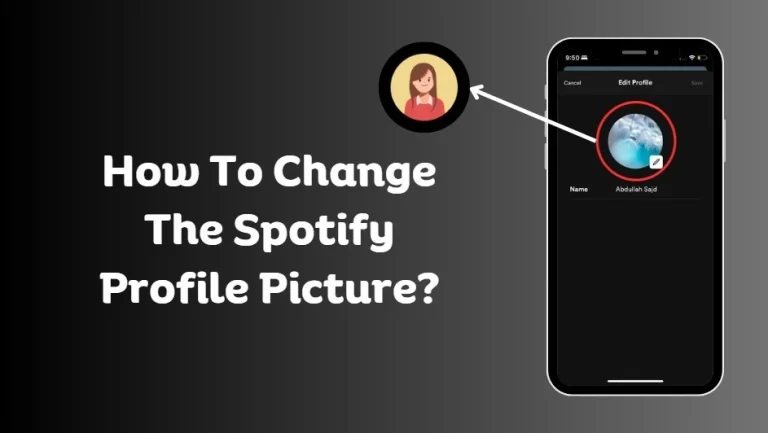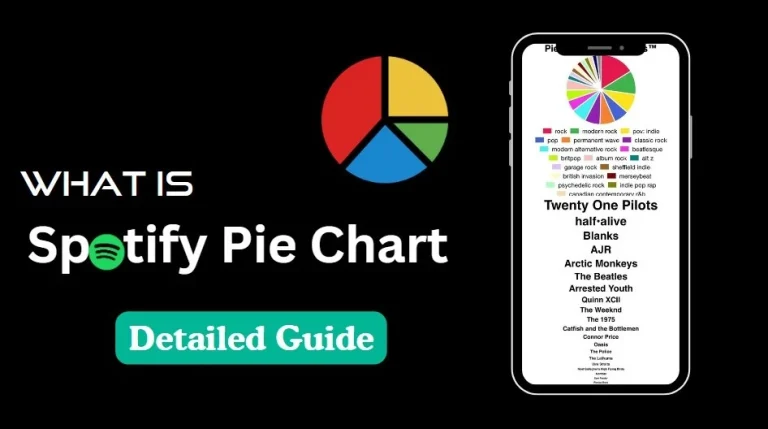Spotify Model in Agile: Everything you need to know in 2024
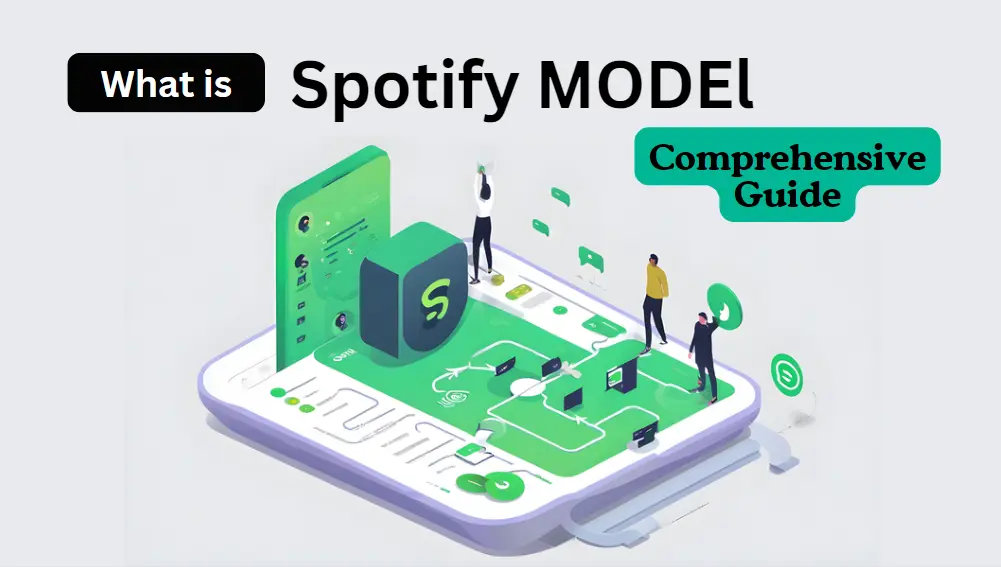
Spotify is one of the largest and most streaming platforms for music listeners. It has an exquisite collection of over 100 million music tracks with more than 573 million users worldwide. One of the most important reasons behind such massive success was the organizational and management structure which enhances the skills and agility of the team members. Spotify owners not only build their empires but also share their experiences (Spotify Model) to be role models for other companies to organize their resources.
What is the Spotify Model?
The Spotify Model was developed by Henrik Kniberg and Andres Ivarsson in 2012 and published in white in the paper Scaling Agile @ Spotify. Henrik Kniberg never intended to be published as a specific framework rather than an overview of how product development is organized at Spotify. It focuses on ways in which we can structure an organization to enhance the agility of the team members.
It is a teamwork approach to enhance agility and emphasize the significance of teamwork. This has worked for Spotify and other organizations to strengthen new innovative ideas and increase productivity by focusing on autonomy and quality. As an agile company, Spotify’s Model follows Collaboration, transparency, and Simplicity, which makes it a very attractive organization.
Key Elements of the Spotify Model
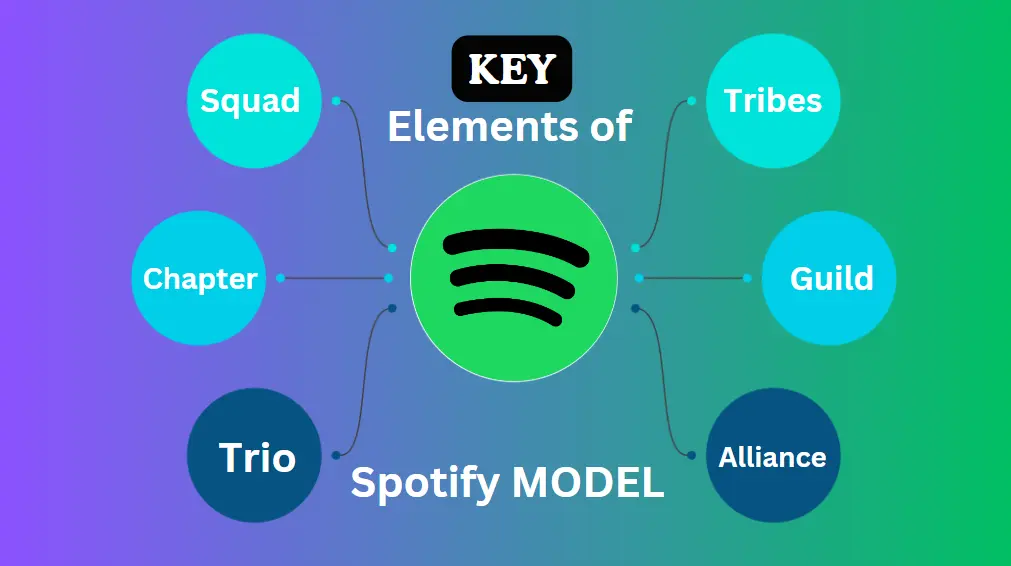
The Spotify Model is based on Simplicity. While going for structuring and organization, a handful of elements were found. These elements form the core of a structured unit and are responsible for the organization’s progress. These key elements are
Squad
The Squad is the model’s fundamental entity, which comprises team members performing the specified work. It doesn’t have a dedicated Squad lead but a Product Owner who guides the team members on how to complete the task. Each Squad determines and follows Strategies like Scrum, Kanban, XP, or a Hybrid. A Squad has access to an agile Coach who monitors planning meetings.
Tribes
A tribe is a group of Squads that interact with each other while working for the same feature. A tribe can have 40 to 150 members aligned by Dunbar’s Number. Each Tribe is headed by a Tribe Lead, who helps to coordinate across squads and encourage mutual collective efforts. Tribes meet to share their progress and innovative ideas.
Chapter
Although Squads are autonomous, it is still essential to have professionals who look after the team members’ progress. Chapters are called team members under the professional responsible for keeping the look at the work standards across a discipline. Chapters are led by a Senior Technology Lead, who acts as the manager of the chapter.
Guild
Team members who are passionate about specific tasks can form an association called Guild. The members of the Guild have Common goals, and they are entirely volunteers. Guild can be headed by a Guild Coordinator who can be a source of interaction among people.
Trio
The trio combines Tribe Lead, Product Lead, and Design Lead. Each Tribe has a trio that looks into the coordination of these three perspectives while working on feature areas.
Alliance
An alliance is a coalition of Tribe Trios to work together for the completion of specific goals. In alliance, Trios work together and collaborate on goals bigger than any tribe.
Challenges of the Spotify Model
The Spotify Model was based on the working of a specific organization, but other organizations tend to use it to get the same benefits. Some of the companies have success, but none of them come closer to that of Spotify. The model itself seems simple, but the environment where it is to be implemented seems more complex; therefore, the level of success is not near to Spotify.
Many Organizations use the model of Spotify; for them, it is like a simple organizational structure where people report to a Chapter and work with team members (Squad). For success, all the key elements must be given autonomy and trust so that they thrive. If there is be lack of confidence among the members, the benefits of this model cannot be achieved.
Benefits of the Spotify Model
When the model of Spotify was launched, the basic purpose was the organization and minimum efforts to complete the targets. The benefits expanded when this model evolved and was used by other organizations. Some benefits of implementing the Spotify Model are
Less Formal Process and Ceremony
Spotify focuses on the organization of work in an exquisite manner rather than the ceremonies. This gives the organization more flexibility in the working of Squads. The main focus was not for the Squad to change their way but to guide them for collaboration towards the goals.
Read more: Best Spotify Alternatives
More Self-Management and Autonomy
The Spotify Model encourages the autonomy and creative thoughts of the people and trusts them to complete the task in their own way. The decision-making regarding performing specific goals depends on the team members of the Squad. It focuses on transferring responsibility to the Squads, Tribes, Chapters, and Guilds.
Spotify Model Best Practices
If you want to transform an environment of trust and autonomy, then the Spotify Model can be used as inspiration for the structuring. For the model to be successful, you must follow the following practices.
Don’t Copy the Model
Instead of copying the Spotify Model, understand its structures, practices, and mindset for organizational management. After thorough research, impart these aspects to your organization. Your target should not be Spotify but their approaches to improving the working environment of your organization.
Autonomy and Trust are Key
This model gives principles of Autonomy and Trust to the members of the organizations. In your organization, do give the decision-making to your Squads and let them express their creative thoughts rather than making mandatory decisions and making them part of them without their consent.
Transparency with Community
The main reason behind Spotify’s success was its focus on building community and transparency around its work. For success, you need to create an environment where everyone should participate equally. Build trust by creating a conducive environment and having interaction and feedback from the team members.
Encourage Mistakes
You will make mistakes when you are on the verge of doing any task. In organizational structuring, you should encourage team members to participate; even if they make mistakes, encourage them time and time. Spotify’s success story has undergone several failures before attaining what it is today. Spotify still encourages its team members to look for new ways to improve their work through constant experimentation.
Final Verdicts
Spotify Model has been a great source of inspiration if you are looking for structuring and management of an organization to have great success. This model should not be your destination; instead, you should understand its practices and mindset for success. You must trust your Squads and make them autonomous in their creative thinking and ways of performing the targets. Trios and Alliances’ involvement will help solve problems as the organization expands more and more. Starting with the key elements of Spotify’s model will facilitate you, but true agility will come when you follow the practices and mindset and apply them in your context.

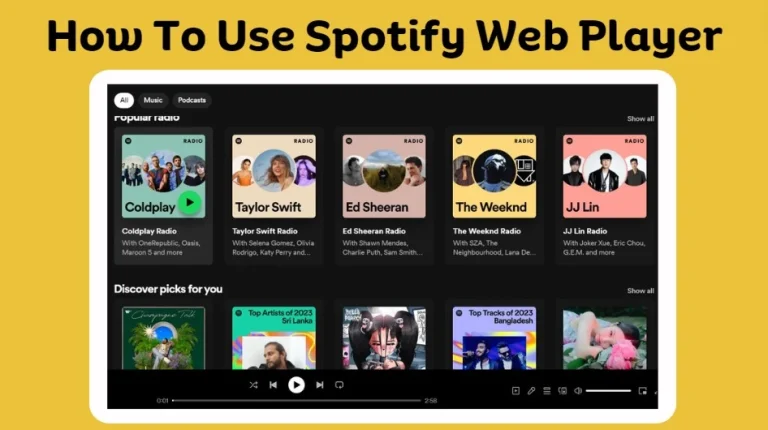


![5 Amazing Spotify Easter Eggs [Unrevelaed Gems]](https://spotifyauthority.com/wp-content/uploads/2023/10/Spotify-Easter-Eggs-768x431.webp)
